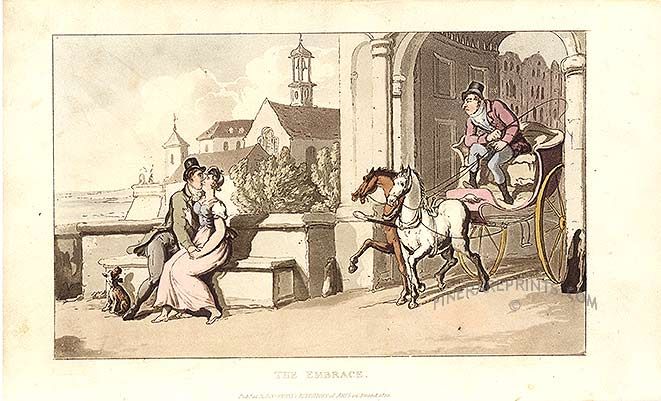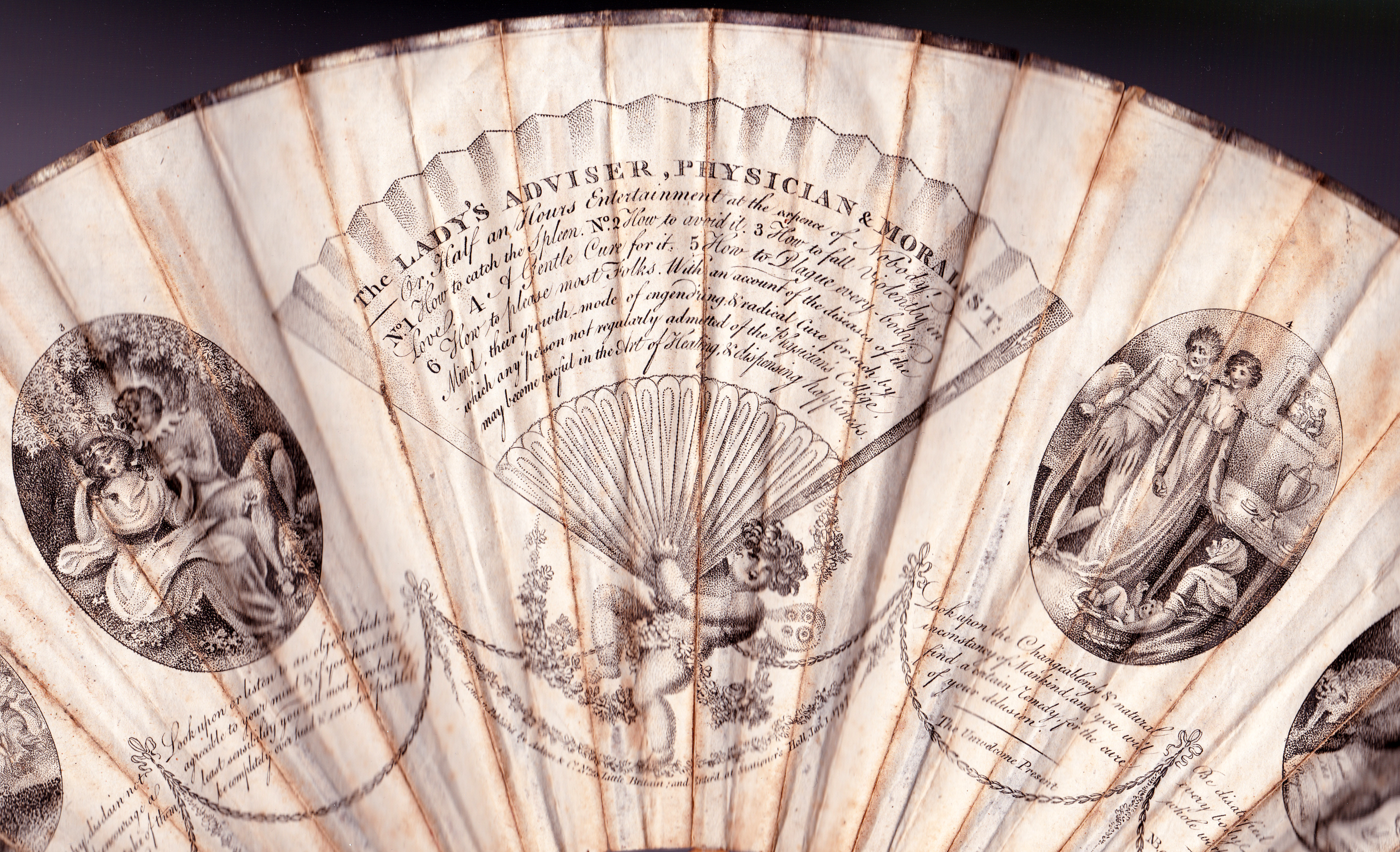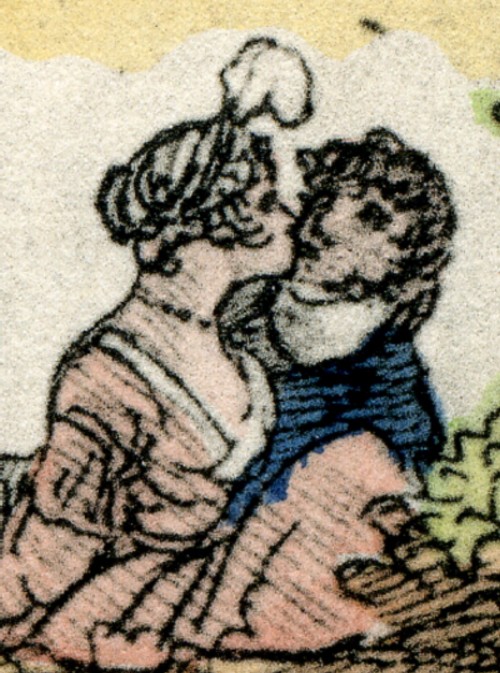
I live in Norfolk, one of the major centres in the 18th and 19th centuries for rearing geese and turkeys for the London market. Both were favourites for eating at Christmas and in the weeks before the roads to the Capital were full of flocks of geese being walked slowly to their doom, their feet protected by being dipped in tar and then sand. The arrival of the stagecoaches made transporting birds much faster and they could be slaughtered in Norfolk, then loaded onto the coaches and arrive without having walked off a good part of their condition.

The image above shows the Norwich stage arriving at the Bull Inn in London hung about with geese, but turkeys were transported in the same way. Not all were dead, as Cecil Aldin’s marvellous little sketch of an escaping bird at the top of this post illustrates. the label around his neck says, ‘Leadenhall Market’ and he’s wisely heading back to Norfolk as fast as he can!
 Turkey was not just food for the well-off and middle classes as I discovered when researching for Regency Slang Revealed The slang for all kinds of poultry was hollow, presumably because birds were cooked hollow inside. A turkey was a Bubbly Jock or a Gobbler, references to the sounds they make, or a Cobble Colter. A roast turkey garnished with a string of sausages was an Alderman, a reference to the chain of office. Not much was wasted at this level of society – the part of a chicken we call the parson’s nose was the Pope’s Nose to the Regency underworld and The Devil was a dish comprising the gizzard of the bird, scored, peppered until it was very hot to the taste and then broiled.
Turkey was not just food for the well-off and middle classes as I discovered when researching for Regency Slang Revealed The slang for all kinds of poultry was hollow, presumably because birds were cooked hollow inside. A turkey was a Bubbly Jock or a Gobbler, references to the sounds they make, or a Cobble Colter. A roast turkey garnished with a string of sausages was an Alderman, a reference to the chain of office. Not much was wasted at this level of society – the part of a chicken we call the parson’s nose was the Pope’s Nose to the Regency underworld and The Devil was a dish comprising the gizzard of the bird, scored, peppered until it was very hot to the taste and then broiled.
A New System of Domestic Cookery; formed upon principles of economy by A Lady (various editions in the early 19thc, mine is 1829) has advice for the prudent housewife on selecting your turkey:
“A Turkey Cock – If young, it has a smooth black leg with a short spur. If fresh, the eyes full and bright and the feet supple and moist. If stale the eyes will be sunk, and the feet dry. Hen-Turkey is known by the same rules; but if old, her legs will be red and rough.”
This book contains a number of recipes for turkey including a version of the Devil, mentioned above:
“An Incomparable Relish, or Devil, of Turkey
On the rump, gizzard , and a drum-stick, put salt, pepper and Cayenne. Let them be broiled, and brought back as hot as possible; cut them in small pieces, pour over a ladle of mustard, ditto of melted butter, a spoonful of soy, ditto of lemon-juice, and some of the gravy out of the dish; mix quickly, and hand round.”
The instructions for roast turkey give the traditional accompaniments still served today. The stuffing is sausage meat with chopped shallots, breadcrumbs and a beaten egg. Sausages and bread sauce are served separately along with the gravy.
When I transcribed the receipt book of Regency housewife Mrs Jean Mills for Mock Oyster Sauce and a Cure for Corns I found only one turkey recipe, for Turkey Pie, which involved leaving the meat seasoned with pepper, salt, nutmeg, pounded clove and mace overnight before baking it in a rich gravy.
However Mrs Mills does include the instructions for Plum Pudding, that other staple of the Christmas dinner. She often gives the name of the person who gave her a particular recipe and she attributes this one to her late first husband, Captain Ryan of the East India Company. Like all the recipes for plum cake and plum puddings that I can find in Georgian recipe books this does not include plums!
Captain Ryan’s Receipt for Plum Pudding
12 Eggs, 1 lb Suet, 1 lb Raisins, 1 lb Currants, 3 Table Spoons Grated Biscuits, 3 of Sugar, 1 Nutmeg, 1 Tea Spoon grated ginger, a little sweetmeat, 1 Glass Brandy. This pudding takes 4 hours to Boil.

If you want to try this with modern weights and measures, 1 lb = 453.5 grams.
On the same page you can see Mrs Edwards’ Plain Cake and Batter Pudding. The ‘do’ – ditto – makes me think Mrs Edwards contributed that too.
Have fun planning your Christmas dinner!











 Turkey was not just food for the well-off and middle classes as I discovered when researching for
Turkey was not just food for the well-off and middle classes as I discovered when researching for 






